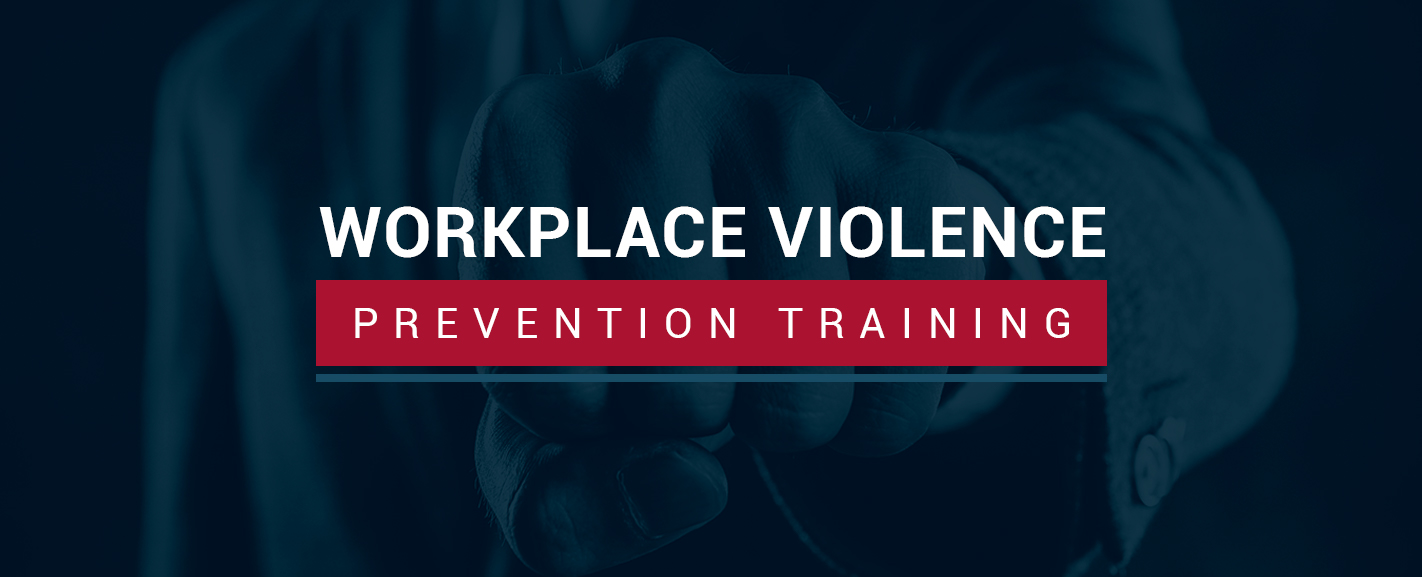An In-depth Overview to Understanding California Workplace Violence Prevention Regulations
The Function of Staff Member Training and Awareness in Enhancing Workplace Violence Avoidance Initiatives Throughout Different Industries
The assimilation of worker training and understanding into work environment physical violence avoidance campaigns is increasingly recognized as an essential facet of business safety across diverse markets. By applying targeted training programs, services can efficiently equip their workforce to determine and deal with potential risks prior to they rise. However, the performance of these campaigns often depends upon numerous important variables that vary by sector, elevating crucial questions concerning the versatility of training methods and their real-world effect. Understanding these subtleties might reveal techniques that can dramatically boost safety procedures and worker confidence in high-risk atmospheres.
Value of Training Programs
In today's vibrant workplace, the relevance of training programs can not be overemphasized, especially in the context of workplace physical violence prevention. These programs work as a foundational element in cultivating a safe and secure and risk-free work environment culture. By equipping staff members with the expertise and abilities needed to determine, reduce, and reply to possible hazards, companies can foster an atmosphere that prioritizes security and well-being.
Effective training programs do greater than just instruct; they encourage staff members to acknowledge warning signs of violence, understand the methods for reporting incidents, and develop strategies to de-escalate prospective disputes. They instill a sense of cumulative duty amongst staff, urging aggressive engagement in keeping a secure office.
Financial investment in training not just boosts staff member awareness yet additionally shows an organization's commitment to safeguarding its workforce. This proactive technique can lead to reduced events of work environment physical violence, reduced absenteeism, and enhanced worker spirits. Inevitably, comprehensive training programs are integral to establishing a resilient business culture that values safety and security and promotes a healthy work environment, thereby lowering the risk of violence and its associated consequences.
Secret Components of Effective Awareness
A comprehensive understanding program includes several key parts that are necessary for successfully stopping workplace physical violence. First, clear interaction of procedures and plans associated to office violence is essential. Workers must be educated regarding the organization's position on violence and the particular protocols in position for reporting cases.
2nd, training sessions must include realistic scenarios that employees may encounter. This sensible strategy assists staff members identify cautioning indicators of prospective physical violence and furnishes them with the essential skills to de-escalate stressful circumstances. Third, cultivating a helpful workplace society is important; staff members ought to really feel equipped to speak up without anxiety of retaliation.
Furthermore, continuous education and learning is essential to maintain awareness fresh and appropriate. Normal correspondence course and updates on arising threats can boost staff members' caution and preparedness. Finally, incorporating feedback devices permits workers to share their experiences and understandings, which can cause continuous improvement of awareness efforts. By incorporating these elements, companies can create a durable framework for avoiding office violence, eventually contributing to a safer and much more efficient environment for all employees.
Industry-Specific Training Strategies
Efficient work environment physical violence avoidance training should be tailored to the unique obstacles and dangers faced by particular markets. As an example, health care environments call for training that addresses the high likelihood of encounters with hostile clients or site visitors. Programs ought to concentrate on de-escalation strategies, recognizing warning signs of possible physical violence, and making certain personnel recognize the value of reporting occurrences.
On the other hand, retail setups might encounter different threats, such as robbery or customer disagreements. Training in these environments need to stress situational recognition, action methods during emergency situations, and the importance of protecting cash money and belongings.
Manufacturing and construction sectors offer their very own dangers, usually linked with social disputes or hazardous working problems. Training in these sectors need to consist of strategies for problem resolution, advertising a society of security, and urging open interaction among employees.
In addition, corporate workplaces might require training fixated stopping harassment and intimidation, cultivating a considerate office culture, and executing clear reporting systems. Each sector has to not just recognize its details susceptabilities but additionally adapt training products to resonate with the labor force successfully, guaranteeing that workers feel equipped and equipped to take care of potential other fierce scenarios.
Measuring Training Performance
Reviewing the effect of office violence prevention training is essential for making certain that staff members are properly prepared to deal with potential dangers. Pre- and post-training studies can gauge modifications in worker understanding, mindsets, and behaviors concerning workplace physical violence.
Additionally, functional evaluations, such as role-playing situations or simulations, can supply insights into how well employees use learned abilities in real-life circumstances. Monitoring occurrence records before and after training can likewise function as an indicator of performance, as a reduction in occurrences may mirror improved employee preparedness.
Furthermore, comments from individuals ought to be methodically gathered to recognize areas for enhancement in training web content and shipment. Performing follow-up examinations at routine intervals aids receive awareness and reinforces training principles gradually - california workplace violence prevention. By utilizing an extensive approach to determining training performance, organizations can guarantee that their office violence avoidance campaigns foster a much safer atmosphere and enhance overall worker health
Building a Culture of Security

Training plays a pivotal function in this cultural change. Routine, comprehensive training sessions enlighten workers about acknowledging warning indications of workplace physical violence and the appropriate actions. Additionally, urging open communication permits workers to voice concerns without fear of revenge, promoting cumulative obligation for safety.
Additionally, integrating safety and security into day-to-day operations makes sure that it becomes a shared value instead of a simple compliance issue. This consists of routine safety drills, updates on policies, and responses systems that include staff members in security discussions and improvements.
Eventually, a durable society of safety not just mitigates the dangers of work environment physical violence however also boosts employee spirits and efficiency. By fostering a setting where security is a basic priority, companies can develop resilient work environments that sustain both specific health and collective success.
Final Thought
Finally, employee training and understanding are essential parts in the avoidance of workplace violence across different sectors. Reliable training programs, customized to specific industry requirements, enhance employees' capability to react and recognize to potential threats. By implementing thorough recognition strategies and promoting a culture of safety and security, organizations can dramatically minimize incidents of office physical violence and enhance total worker morale. Dedication to continuous training and assessment ensures continual efficiency and flexibility in resolving emerging obstacles within the workplace setting.

Normal, site link detailed training sessions educate employees concerning acknowledging warning indicators of work environment violence and the suitable responses.In final thought, staff member training and awareness are vital parts in the prevention of office violence across various industries.